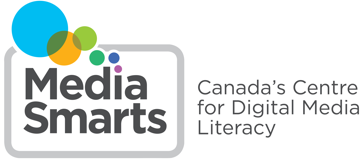How Young Canadians Get Their Online Media
TV, music and movies have been a central part of young people’s lives for generations, and the Internet has only intensified that by delivering all of those directly to our homes – legally and illegally.

TV, music and movies have been a central part of young people’s lives for generations, and the Internet has only intensified that by delivering all of those directly to our homes – legally and illegally.

Today is Safer Internet Day 2016(February 9), and the theme is “play your part for a better internet”. To help you play your part, we’d like to share a new tip sheet by and for Canadian youths on how to make the Internet safer and better for everyone.

Like it or not, if you use the Internet you have an online identity. Some people call this your "brand." What's a brand?

Screen time is one of parents’ top tech-related concerns, according to MediaSmarts’ research, and it’s the most common source of tech-related conflict between parents and young people in Canada. Kids are worried about their screen use too: almost half say they spend too much time on their phones.

This guide provides an overview of what AI is – and in particular Generative AI – and gives two examples of main AI tools you are likely to encounter. Then it explains some key ethical and social issues related to Generative AI.

/**/
Teachers don’t have to feel nervous about AI in the classroom – but we do need to know more about it: just a third of teachers say they’ve been given training on how students can use AI responsibly.[1]

If anyone still doubts that youth need to learn how to evaluate online information, those doubts should have been dispelled by a recent hoax perpetrated by the group called the Yes Men. This group, which has a history of staging fake press conferences, decided to draw attention to Canada's position at the Copenhagen conference on climate change by creating a number of fake Web sites purporting to be, among others, the Copenhagen summit site, the Wall Street Journal, and Environment Canada's site. While it didn't take long for Environment Canada to make a statement exposing the hoax, by that time many journalists had reported the story as fact and the story had been widely distributed by wire services.

Ever since Cronus the Titan tried to swallow his son Zeus, parents have feared being supplanted by their children. (It didn't take.) But it's only in the last few generations, as the rate of technological progress has accelerated, that children have grown up in a world significantly different from the one their parents knew, and it's only very recently that parents have seen their surpass them while they were still in the single digits. Thanks to digital media, the world is changing so rapidly today – consider that five years ago there was no Twitter, ten years ago no Facebook and fifteen years ago no Google – that even those of us who spent our childhoods programming our parents' VCRs can feel left behind.

Here are four quick and easy steps to find out the truth and share good information. Sometimes you only have to do one of these things, and most steps take less than a minute.
Sometimes a single search can break the fake, if a professional fact-checker like Snopes has already done the work for you.

People who share false or misleading information sometimes use the language of critical thinking and media literacy, telling followers to “do your research” and “think critically” in one breath and then to “trust the plan” in the next. So how can we tell if we’re really thinking critically?
